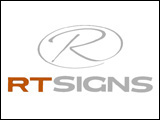An agricultural economist with the University of Missouri says how the weather impacts next year’s crop production will be the biggest factor impacting the profitability of North American hog producers.
Over the past couple of months hog prices have improved from their lows this past fall while feed costs have fallen from their record levels this past summer.
Dr. Ron Plain, an agricultural economics professor with the University of Missouri, says as a result of this year’s drought we have very little carry over of corn so the big unknown is what summer weather is going to do to the feed supply.
Hog prices here in 2012 weren’t all that bad, actually probably about the second highest year ever, but with record feed costs it’s still for 2012 probably losses of 10 to 15 dollars per head when we get the final data in.
As far as next year, we’re not going to change the feed supply.
It was terribly dry in the U.S. in 2012 and until we can harvest the new crop we’re going to see some expensive feed but you’ve got to expect a lot of acres to get planted come spring and, if the weather’s good in June and July, we could easily produce a record corn crop and take two dollars or more per bushel off the price of corn.
On the hog price side of things we’re cutting back meat production across the board in the United States so we ought to see hog prices and other livestock prices move higher as we move through 2013.
Dr. Plain notes it looks like 2012 will be a new record year for U.S. pork exports but domestic demand will depend on how the economy does.
He says things look soft in the fourth quarter but we can be optimistic about some economic growth in 2013 and, if so, hog prices might set a new annual record next year but if the U.S. economy slows there probably won’t be enough demand, even with less pork on the market, to push hog prices much above this year’s level.



